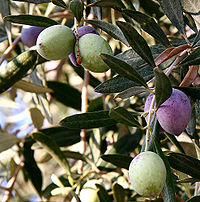
Polyphenols from selected dietary spices and medicinal herbs differentially affect common food-borne pathogenic bacteria and lactic acid bacteria
Sign Up to like & getrecommendations! Published in 2018 at "Food Control"
DOI: 10.1016/j.foodcont.2018.05.032
Abstract: Abstract Phenolic rich extracts from edible plants exhibit antimicrobial ability against various pathogens, however, their effects on probiotic bacteria have been much less investigated. This study, therefore, investigated and compared the effects of phenolic rich… read more here.
Keywords: pathogenic bacteria; phenolic rich; food borne; borne pathogenic ... See more keywords

Growth, hydrolases and ultrastructure of Fusarium oxysporum as affected by phenolic rich extracts from several xerophytic plants.
Sign Up to like & getrecommendations! Published in 2017 at "Pesticide biochemistry and physiology"
DOI: 10.1016/j.pestbp.2016.11.007
Abstract: Fusarium oxysporum, the causal agent of rot and wilt diseases, is one of the most detrimental phytopathogens for the productivity of many economic crops. The present study was conducted to evaluate the potentiality of some… read more here.
Keywords: fusarium oxysporum; growth hydrolases; phenolic rich; xerophytic plants ... See more keywords

Exploring the antimicrobial effects of a phenolic-rich extract from jabuticaba depulping waste against enterotoxigenic Escherichia coli.
Sign Up to like & getrecommendations! Published in 2023 at "Letters in applied microbiology"
DOI: 10.1093/lambio/ovad010
Abstract: This study evaluated the effects of a phenolic-rich extract from jabuticaba [Myrciaria jaboticaba (Vell.) Berg] depulping waste (PEJ) on the survival, antibiotic susceptibility, virulence, and cellular functions of various enterotoxigenic Escherichia coli (ETEC) strains. The… read more here.
Keywords: extract jabuticaba; depulping waste; rich extract; enterotoxigenic escherichia ... See more keywords

Phenolic-rich extracts from acerola, cashew apple and mango by-products cause diverse inhibitory effects and cell damages on enterotoxigenic Escherichia coli.
Sign Up to like & getrecommendations! Published in 2021 at "Letters in applied microbiology"
DOI: 10.1111/lam.13586
Abstract: This study aimed to evaluate the inhibitory effects of phenolic-rich extracts from acerola (Malpighia emarginata D.C., PEA), cashew apple (Anacardium occidentale L., PEC) and mango (Mangifera indica L., PEM) by-products on distinct enterotoxigenic E. coli… read more here.
Keywords: inhibitory effects; phenolic rich; etec strains; extracts acerola ... See more keywords

A fiber and phenolic-rich flour from Isabel grape by-products with stimulatory effects on distinct probiotics and beneficial impacts on human colonic microbiota in vitro.
Sign Up to like & getrecommendations! Published in 2022 at "Letters in applied microbiology"
DOI: 10.1111/lam.13723
Abstract: This study evaluated the effects of a fiber and phenolic-rich flour (IGF) prepared from Isabel grape by-products on the growth and metabolism of different probiotics and distinct bacterial populations part of the human intestinal microbiota… read more here.
Keywords: microbiota; phenolic rich; isabel grape; vitro ... See more keywords

Antiproliferative and Pro-Apoptotic Effects of a Phenolic-Rich Extract from Lycium barbarum Fruits on Human Papillomavirus (HPV) 16-Positive Head Cancer Cell Lines
Sign Up to like & getrecommendations! Published in 2022 at "Molecules"
DOI: 10.3390/molecules27113568
Abstract: The in vitro antiproliferative activity of a phenolic-rich extract from Lycium barbarum fruits against head and neck HPV16 squamous cell carcinoma (OSCC) has been demonstrated, indicating for the first time that L. barbarum extract inhibits… read more here.
Keywords: cell; barbarum fruits; rich extract; phenolic rich ... See more keywords